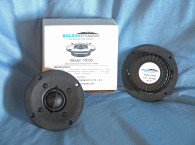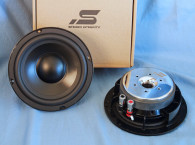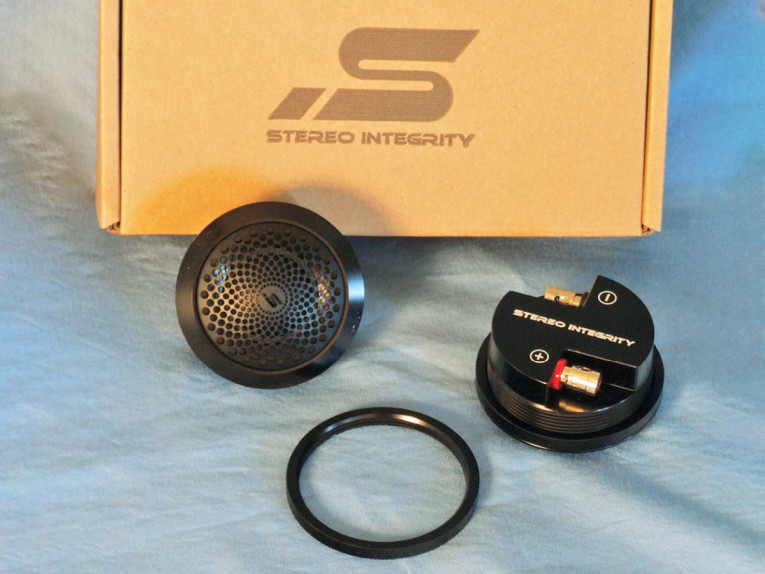
Stereo Integrity sent us its high-end tweeter design, the M25 mkII, shown in Photo 1. Features for this transducer include a 25mm silk dome diaphragm and surround, a dual-magnet neodymium (neo) motor (two N52H neo magnets in opposite magnetic polarity to increase gap B and make the motor self-shielding), a CNC’d black anodized aluminum motor housing with a tuned rear chamber (this also includes a threaded area with a mounting ring), a two-layer 25.5mm diameter CCAW wound voice coil, a compact 50mm diameter face plate with a steel anodized grill, 89dB 2.83V/1m sensitivity, chrome-plated color-coded push terminals, and a nominal 4Ω impedance. While the mounting ring is primarily intended for mobile audio mounting situations, it also facilitates mounting to custom aluminum plates for home audio.
I used the LinearX LMS analyzer to produce the 300-point impedance sweep illustrated in Figure 1. The resonance occurs at a fairly low 945Hz (factory spec is 1100Hz). With a 3.70Ω DCR (Re), the minimum impedance for this tweeter is 3.96Ω at 5.28kHz.

Following the impedance test, I surface-mounted the M25 mkII tweeter (it surface mounts flat to a baffle) in an enclosure that had a baffle area of 10”×6” and measured the on- and off-axis frequency response using the Loudsoft FINE R+D analyzer (courtesy of Loudsoft) and the GRAS 46BE ¼” microphone (provided by GRAS Sound & Vibration). The equipment was set up to measure the 200Hz to 40kHz frequency response (using a 192kHz sampling rate) at 2V/0.5m, normalized to 2.83V/1m. Data was then acquired with sweeps at 0°, 15°, 30°, and 45°. Figure 2 shows the on-axis response of the Stereo Integrity M25 mkII, which measured ±0.5dB from 1.5kHz to 4.3kHz, with a 6.5dB rise between 4.3kHz and 20kHz where the tweeter begins its second-order low-pass roll-off.

Figure 3 gives the on- and off-axis (0°, 15°, 30°, and 45°) response of the M25 mkII tweeter, with the off-axis curves normalized to the on-axis response shown in Figure 4. Figure 5 shows the CLIO 180° polar plot (measured in 10° increments with 1/3 octave smoothing). The two-sample SPL comparison is illustrated in Figure 6, indicating the two samples were closely matched to within less than ≥0.25dB throughout their operating range from 2.5kHz to 20kHz.

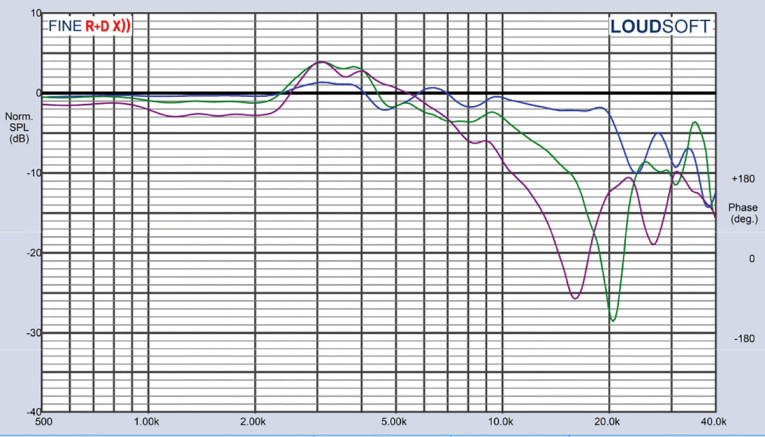
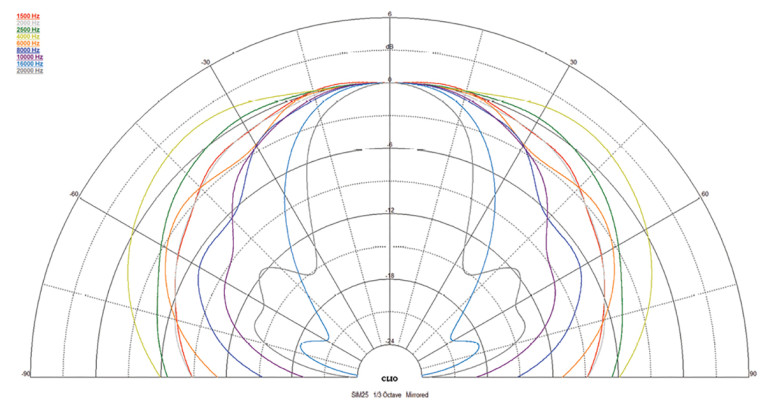

Next, I initialized Listen’s SoundCheck AudioConnect analyzer along with the Listen SCM-2 ¼” microphone (all provided courtesy of Listen, Inc.) to measure the impulse response with the tweeter surface-mounted on the same test baffle. Importing this data into the Listen SoundMap software produced the cumulative spectral decay (CSD) plot, also referred to as a “waterfall” plot, shown in Figure 7. Figure 8 provides the Short Time Fourier Transform (STFT) displayed as a surface plot.


For the last SoundCheck test protocol, I set the 1m SPL to 94dB (4V) using a noise stimulus and built-in SLM and measured the second and third harmonic distortion with the microphone placed 10cm from the dome diaphragm (Figure 9).

After reviewing all the data that I collected on the M25 mkII, I can confirm that this is a well-configured very compact surface mount 1” cloth dome tweeter with nice build quality. For more information about this tweeter and other OEM drivers from Stereo Integrity, visit www.stereointegrity.com. VC
This article was originally published in Voice Coil, July 2023.





